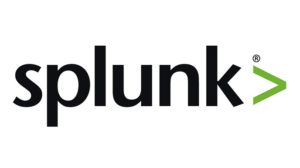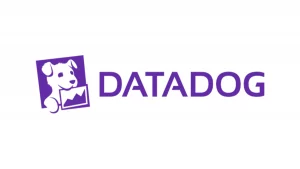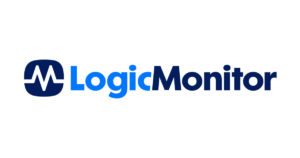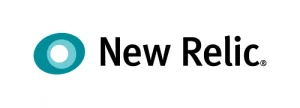First things first: before we can create any kind of technological advancement, we need to figure out how our systems function.
This includes having a fundamental concept of observability and being aware of the whereabouts of various sources of information.
We’ve seen the rise of observability microservices and containers over the past few years. Now we are seeing even more adoption of these technologies in the future.
The development of new technologies brings with it the requirement for new tools that can assist us in monitoring and troubleshooting application problems.
In this article, I will review 10 tools that help with observability and monitoring.
TelemetryHub
TelemetryHub is a premium observability and monitoring service that can offer actionable insights for your business. It offers real-time metrics on every aspect of your application’s performance, including requests per second, errors, latency, response time, transactions per second, and much more.
The company has developed its own proprietary software, which provides a dashboard view of all this information. This allows users to see trends and anomalies across their entire infrastructure, from individual servers to cloud services like AWS and Google Cloud Platform.
It also provides detailed reports on your app’s health and performance. In short, TelemetryHub was built by developers for developers.
TelemetryHub allows you to spend less time troubleshooting and more time developing a great product by providing real-time alerting, a user interface geared for developers, and tracing logic that correlates bottlenecks directly to source code.
TelemetryHub has also recently launched new observability tools, including TelemetryHub. TelemetryHub is an excellent tool for speeding up your sleuthing by showing you crucial information from your telemetry signals gathered from large quantities of data.
Telemetry Hub can reduce the time you spend debugging by as much as a quarter, which translates into profits as you will save on labor and have more time to focus on developing your business.
Another fantastic advantage of using TelemetryHub is the simplification of complex systems. It allows you to diagnose and resolve issues in complex systems without an intricate knowledge of the system and how it works.
Features
- Endpoint Analysis
- Deep Tracing Logic
- Crossfilter
- Developer Identification
Key takeaways
TelemetryHub is the best of the bunch when it comes to observability microservices in 2022. Equipped with many accurate and useful observability tools, TelemetryHub allows you to gain better insight into how and where your system is experiencing issues, including full-stack monitoring.
The next generation of monitoring solutions will provide visibility across all layers of your infrastructure, from application code to the operating systems and hardware components running them.
This means you’ll see what’s happening at every level of your stack, allowing you to identify and resolve problems before they impact end users.
TelemetryHub also has the new Telemetry Hub feature that promises to reduce debugging time by as much as 25%. It also offers simple explanations for complicated issues arising from complex systems.
Lightstep
Lightstep is a cloud-native observability tool that also offers monitoring services. Lightstep is designed to be easy to use. You simply upload your logs and start analyzing them.
The platform is based on open-source libraries and runs on top of Kubernetes. The company behind Lightstep is the same team who created Zipkin, one of the most popular distributed tracing solutions today.
Lightstep is mainly used for distributed tracing, with the added benefits of monitoring and diagnosing applications.
This means that you can easily monitor and analyze any type of application, whether stateless or stateful.
You can even set alerts if certain thresholds are exceeded.
Features
- Distributed Tracing
- Monitoring
- Alerts
- Kubernetes Support
Key takeaways
Lightstep is a good choice for those looking for a solution that’s easy to use and doesn’t require any configuration.
It’s also very powerful and flexible, so you can do anything from basic logging to advanced distributed tracing.
However, if you want a solution that’s easy to use and doesn’t require any configuration, then Lightstep may be just what you need.
Honeycomb
You will have visibility into every aspect of your infrastructure thanks to a service mesh known as Honeycomb.
Honeycomb can help you gain a deeper comprehension of the functionality of your microservices as well as how they collaborate with one another.
It allows you to see the network traffic between components and client requests.
Honeycomb uses Prometheus and Grafana to provide metrics about your infrastructure.
This will take care of installing the required software, configuring it, and starting the services.
It also supports HTTP/2 and gRPC protocols.
Features
- Network Traffic Monitoring
- Metrics Collection
- HTTP/2 & gRPC Protocol Support
- Prometheus & Grafana Metrics
Key takeaways
Honeycomb is another great option for observability in 2022.
It offers many features, including network traffic monitoring, metrics collection, HTTP/2, gRPc protocol support, and more.
It also integrates with Prometheus and Grafana, which allows easier data collection and visualization.
Instana
Instana is an API management platform that enables developers to build, deploy, and manage APIs at scale.
In addition, it comes with a collection of tools that developers can use to monitor and troubleshoot their APIs.
Engineers who were dissatisfied with the services provided by other businesses inspired the company’s founders to set up shop and launch their own venture.
They built a product that could handle all aspects of managing APIs, including monitoring, security, performance, and reliability.
Features
- API Performance Analytics
- API Health Checks
- API Logging
- API Management
- Cloud Native Computing Foundation (CNCF)
Key takeaways
Instana is a great option for API management in 2022.
It allows developers to build, deploy and manage APIs at scale while providing a suite of tools to monitor and troubleshoot APIs.
It also supports CNCF projects like Prometheus and Grafana.
Splunk
Splunk is a log analytics platform that collects, indexes, searches, visualizes, and analyzes unstructured data from various sources such as servers, networks, databases, IoT devices, and many others.
It has been around for a while and has millions of users worldwide.
Splunk is built on Apache Hadoop and Elasticsearch. It also comes with Splunk Cloud, a managed version of Splunk Enterprise.
Features
- Log Analysis
- Visualization
- Elasticsearch Integration
- Apache Hadoop Integration
Key takeaways
Splunk is one of the most popular solutions for log analysis in 2022.
It’s a powerful tool that allows you to search through logs, visualize them, and perform actions based on the results.
You can also use it to analyze application logs, server logs, network logs, etc.
Dynatrace
Dynatrace is a cloud-based software performance management solution that monitors applications across multiple environments.
It can identify bottlenecks, track user experience, and improve business processes. This observability tool also provides detailed insights into your applications’ performance.
The company offers two products: Dynatrace Insight, designed to monitor web application performance, and Dynatrace Performance Management, aimed at monitoring mobile apps.
Both products include dashboards, reports, alerts, and integrations with third-party tools.
The Dynatrace Platform consists of three main components: analytics, monitoring, and reporting.
Features
- Application Performance Monitoring
- User Experience Tracking
- Business Process Improvement
- Performance Insights
- Traceability
Key takeaways
Dynatrace offers a wide range of features that allow you to monitor and troubleshoot your apps.
It helps you find out where your app is slow or if there are any issues with your code.
You can use this tool to understand what happens when users interact with your app.
DataDog
DataDog is a service that collects and stores telemetry data from different systems. It then uses machine learning algorithms to provide actionable insights.
This means that DataDog will store information about your system and offer suggestions for fixing problems.
DataDog collects data from different sources, such as web servers, database servers, load balancers, and other services.
It also collects data from third parties such as Google Analytics, Mixpanel, New Relic, and others.
Furthermore, DataDog can detect anomalies, predict future events, and recommend corrective measures.
Features
- Anomaly Detection
- Telemetry Collection
- Machine Learning Algorithms
Key Takeaways
DataDog is an excellent choice for monitoring and troubleshooting your infrastructure in 2022.
These observability microservices can collect data from all systems and help you make better-informed decisions. It also makes suggestions for potential problem-solving measures.
Sumo Logic
Sumo Logic is a cloud-based security intelligence platform that helps organizations protect their digital assets.
It’s a solid platform for threat detection, incident response, compliance auditing, and more.
The company was founded by former McAfee executives frustrated by the lack of tools available to help companies detect threats at scale.
So they built Sumo Logic to provide visibility into all aspects of IT infrastructure, including servers, networks, applications, endpoints, and IoT devices.
Features
- Threat Detection
- Incident Response
- Compliance Auditing
Key takeaways
Sumo Logics’ Security Intelligence component analyzes real-time data from various sources, including social media, mobile devices, and IoT sensors, to offer you real-time insights.
It also includes advanced analytics tools that detect threats before they cause damage.
Incident response is another important feature of Sumo Logics. It allows you to respond quickly to incidents and prevent them from escalating.
LogicMonitor
LogicMonitor is a cloud-based log management solution that helps businesses manage logs generated by their applications.
This observability platform offers excellent actionable insights that ensure your applications continue functioning with as few issues as possible for your customers.
The company has recently announced its acquisition of Logz.io, which will allow it to offer a complete end-to-end solution for managing application logs.
This new offering allows users to gain visibility into all aspects of their infrastructure from one place.
Features
- Real-time Alerts
- Customized Dashboards
- Metrics Analysis
- Alert Management
- Security Incident Management
Key takeaways
LogicMonitor is designed to simplify the process of analyzing logs.
It provides a single pane of glass where users can view all relevant metrics and alerts.
With this approach, users no longer need to spend time searching multiple dashboards or reports.
New Relic
New Relic is a web performance and network monitoring service that helps developers monitor and optimize their websites.
It’s designed to give developers insight into what’s happening inside their apps so they can fix any bugs or improve their code.
New Relic uses the same technology that powers some of the world’s most popular sites like Facebook, Netflix, and Twitter.
Features
- Application Performance Monitoring (APM)
- Web Application Firewall (WAF)
- Network Traffic Analytics
- Performance Insights
Key takeaways
New Relic is an APM tool that monitors the performance of your app.
It gives you in-depth information about how your app behaves on various operating systems and web browsers.
Everything is included here, from how long a page takes to load to any other issues that may arise.
Using New Relic, you can pinpoint performance issues in your code and learn how to fix them.
What to Look for in an Observability Tool
An observability tool should be able to monitor all aspects of your application, from the front end through the back end.
This comprises keeping track of performance measures, including response times, throughput, failures, and exceptions.
Along with monitoring logs, the tool should also be able to monitor databases, message queues, and APIs.
Finally, the tool should provide dashboards and alerts when something goes wrong.
Some tools focus on one aspect of observability, such as logging, whereas others offer a broader set of features.
For example, some tools include alerting capabilities, which allow you to send notifications when certain events occur. Others incorporate visualization tools, allowing you to see what’s happening across your entire system at once.
Try TelemetryHub Today
In conclusion, if you haven’t done so, now would be a great time to consider adding observability tools to your digital marketing strategy.
Whether you’re looking to improve customer engagement, increase conversion rates, or gain better insights into your audience, there’s never been a better time to add new technology to your arsenal.
If you seek the help of observability companies, you should look no further than TelemetryHub. Offering a plethora of observability microservices, TelemetryHub helps you spend less time debugging your complex systems and focus on what’s important.
Check out TelemetryHub.com today to learn more.










